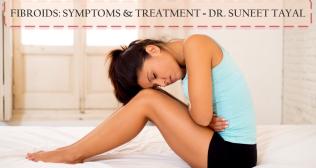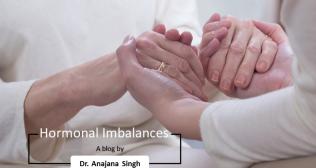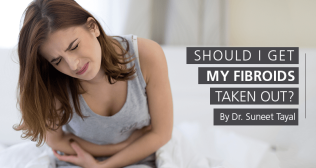Menstrual Cramps : Symptoms, Causes & Treatment
What is Dysmenorrhea?
Widely regarded as one of the most commonly encountered gynecologic disorders, Dysmenorrhoea is a term that is associated with painful periods. Although these menstrual cramps aren’t indicative of any serious underlying condition, the pain can be severe enough to cause havoc even while doing regular day-to-day activities. Studies have revealed that nearly 10 percent of all women experience painful periods although women under the age of 25 are usually affected by this condition. Dysmenorrhea can be further classified as primary or secondary dysmenorrhea.
Primary dysmenorrhea. Primary dysmenorrhea can be described as a menstrual pain which usually occurs when a woman starts ovulating for the first time and continues throughout her life. This condition is considered to be the most common type of dysmenorrhea and can start without a known cause. Women can suffer from painful and frequent menstrual cramping owing to severe and abnormal uterine contractions. Women in their early 20s usually suffer from this condition but over time, it tends to ease out.
Secondary dysmenorrhea. This type is caused due to the presence of certain gynecologic or reproductive disorders. It usually starts later in life – during adulthood – and may be triggered by medical conditions such as such as adenomyosis, pelvic inflammatory disease, endometriosis or fibroids. That being said, with the help of medications or surgery, these disorders can be easily treated.
Symptoms
The primary symptom of dysmenorrhea is excruciating pain which starts from the abdomen and may even radiate to the hips, lower back and legs. This pain can be described as an incessant, unrelenting pain and usually starts at the onset of the period. The pain is instigated when the uterus expels clots of blood stemming from the lining of the uterus. In addition, the first 24 hours are typically the most painful and subsides after 2 to 3 days. Other symptoms include the following – all of which can be characterized as mild or severe:
- Nausea
- Vomiting
- Diarrhea
- Lightheadedness
- Severe headache
- Fatigue
- Presence of clots in the menstrual blood.
- Constipation
- Bloating in the belly area
- Bouts of fainting
- Tender breasts
Causes
Women afflicted with primary dysmenorrhoea are said to have excessive levels of prostaglandins which induces the uterine contractions. These hormones which are released excessively during menstruation and childbirth are responsible for the cramps. However, the cause for the increased prostaglandins is unknown.Secondary dysmenorrhoea, on the other hand, can be triggered due to the presence of numerous conditions including:
- Endometriosis – the cells lining the uterus spread to other areas of the pelvis including ovaries, bowel, and tissues lining your pelvis causing them to behave differently resulting in severe pain during periods
- Presence of an ovarian cyst or a tumor
- Fibroids – benign tumors made of muscle and tissue that develop within the uterus or are fixed to it.
- Pelvic inflammatory disease
- A sexually transmitted infection (STI)
- Adenomyosis – can be described as a condition where the tissues that form the lining of the uterus starts growing in the muscle walls of the uterus.
There are also other risk factors which can worsen the condition including:
- Lack of exercise
- Psychological or social stress
- Excessive smoking
- Women who have never been pregnant
- Consuming excessive alcohol
- Obesity
- A family history of dysmenorrhea
- Early menstruation – before the age 12.
Diagnosis
Most women resort to home remedies or painkillers for pain relief. However, if the cramps are incapacitating, an ultrasound will be recommended by the doctor to check whether the individual has an underlying disorder and not caused by certain reproductive disorders such as endometriosis or fibroids. Blood and urine tests along with Hysteroscopy, Laparoscopy, and/or, MRI scans may also be recommended to get a clearer picture.
Treatment and Prevention
Primary dysmenorrhea is usually treated by nonsteroidal anti-inflammatory medication (NSAID) such as ibuprofen and naproxen as they effectively work towards stopping the cramping effects of prostaglandins.
In some cases, hormonal treatment might also be suggested in the form of oral contraceptives or birth control pills. Since these pills prevent ovulation, they put a stop to the production of high levels of prostaglandin. Hence, they have been proven as an effective method to help lessen the severity of the symptoms and reduce the resultant blood flow and cramping.
In addition to the above, there are several non-medicinal treatments for relieving the pain of dysmenorrhea which include:
- Placing a heating pad across the belly or lower back
- Taking a hot bath or shower
- Yoga
- Conscious dietary changes such as reducing caffeine & sugar intake and increasing protein intake.
- Acupuncture
- Doing mild but regular exercises in the form of walking or cycling
- Taking plenty of bed rest as the period approaches or on the first day of the period
In case the above-mentioned treatment measures don’t work, the individual might have secondary dysmenorrhea which might even entail the need for surgery in extreme cases. Some of the recommended surgical procedures include:
- Endometrial ablation described as a procedure that surgically destroys the lining of the uterus
- Endometrial resection described as a procedure to remove the endometrium or the lining of the uterus
- Hysterectomy which means getting the uterus surgically removed



















